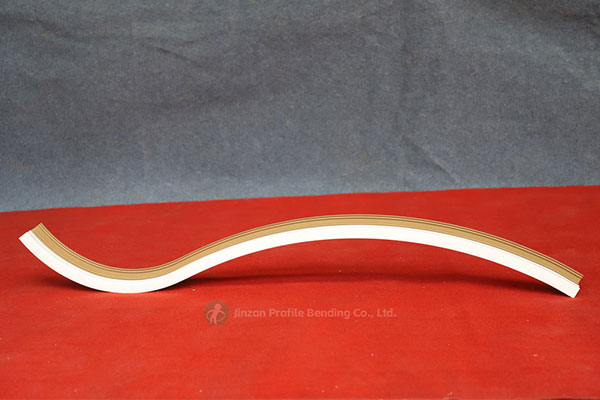Redefining the construction industry with innovative solutions, cuttin-edge technology and sustainable practices
Profile Bending 2025-09-17
Profile bending technology is a fundamental process in manufacturing that allows for the shaping of materials, particularly metal profiles, into desired curves and angles. This technology is widely used across various industries, including construction, automotive, and aerospace. In this article, we will explore the basic principles of profile bending, the different techniques employed, and provide real-world application examples to illustrate its significance.
Profile bending involves the deformation of materials, primarily metals, to create curved shapes. The fundamental principles governing this process include:
1.Material Properties: The ability of a material to bend without breaking depends on its mechanical properties, such as yield strength, ductility, and elasticity. Understanding these properties is crucial for determining the appropriate bending method and parameters.
2.Bending Radius: The bending radius is the radius of the curve that the material takes during the bending process. A smaller radius typically requires higher forces and can lead to material failure if not managed correctly. It is essential to select an appropriate radius to avoid issues like cracking or warping.
3.Force Application: The bending process requires the application of force to deform the material. This force can be applied through various methods, including mechanical, hydraulic, or pneumatic systems. The method chosen often depends on the thickness and type of material being bent.
4.Bending Techniques: There are several techniques for profile bending, including roll bending, press braking, and free-form bending. Each technique has its specific applications and advantages, which we will discuss in detail below.

Techniques of Profile Bending
1.Roll Bending:
-Description: In roll bending, three rollers are used to gradually bend the material into a desired curve. The material passes through the rollers, which apply pressure and shape it into a cylindrical or conical form.
-Applications: Commonly used for creating large curves in sheet metal for applications like pipes, tanks, and frames in construction and manufacturing.
2.Press Braking:
-Description: This method involves using a press brake to bend metal sheets along a straight line. A punch and die are used to create specific angles and shapes by applying force to the material.
-Applications: Widely used in the automotive industry for producing components like brackets, frames, and body parts.
3.Free-Form Bending:
-Description: Free-form bending allows for more complex shapes and curves. This technique often uses CNC (Computer Numerical Control) machines, enabling precise control over the bending process.
-Applications: Utilized in industries requiring custom shapes, such as furniture design, decorative metalwork, and artistic installations.
4.Hydraulic Bending:
-Description: Hydraulic bending uses hydraulic pressure to manipulate the material into the desired shape. This method is particularly effective for bending thick sections and heavy materials.
-Applications: Often found in heavy machinery manufacturing and structural steel applications, where high precision and strength are required.
Real-World Application Examples
1.Construction Industry:
- In the construction sector, profile bending is essential for creating structural components such as beams and columns. Roll bending is frequently used to create curved steel beams that form the foundation of modern architectural designs, allowing for innovative building shapes and designs.
2.Automotive Industry:
- The automotive industry relies on press braking to manufacture body panels and structural elements of vehicles. This process enables the production of lightweight yet strong components that enhance vehicle performance and safety.
3.Aerospace Industry:
- In aerospace applications, profile bending is critical for producing components like wing structures and fuselage frames. The precision achieved through CNC free-form bending ensures that the components meet stringent safety and performance standards.
4.Furniture Design:
- Profile bending is also utilized in furniture design, where unique and ergonomic shapes are desired. Designers often use free-form bending techniques to create aesthetically pleasing and functional pieces, such as chairs and tables with curved lines.
Profile bending technology is a vital aspect of modern manufacturing, enabling the creation of complex shapes and structures across various industries. Understanding the basic principles and techniques involved in profile bending allows manufacturers to optimize their processes, enhance product quality, and meet the diverse needs of their clients. As technology continues to evolve, the applications of profile bending will expand, paving the way for innovative designs and solutions in manufacturing and construction. Whether it’s in building towering skyscrapers or crafting intricate furniture, the significance of profile bending cannot be overstated.